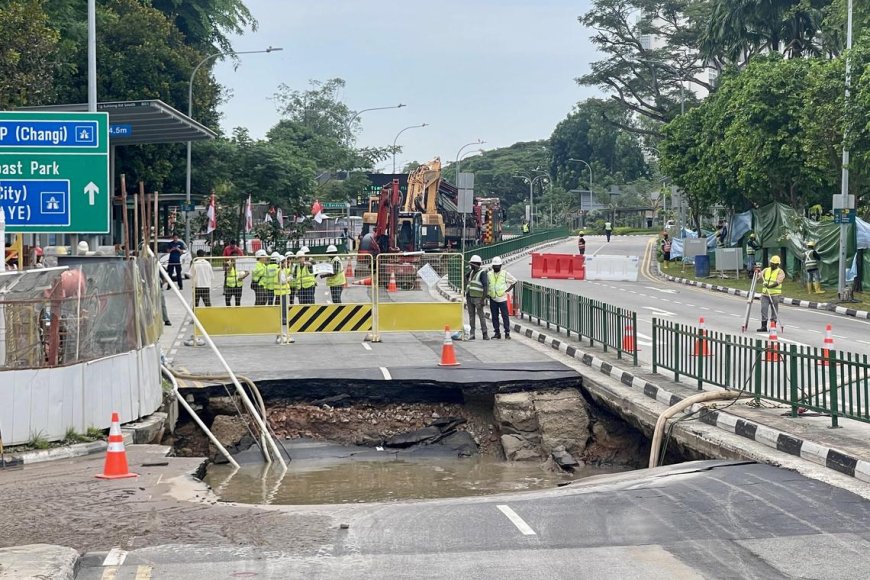Experts: Tanjong Katong Road Sinkhole Did Not Happen Overnight
The large sinkhole in Tanjong Katong Road South that swallowed a car and driver did not form suddenly. Experts explain that sinkholes require time for soil erosion to occur, leading to ground collapse. Signs like cracks and uneven roads may indicate potential sinkhole risks.

Workers involved in recovery work at the site of the sinkhole in Tajong Katong Road South on July 27.
The large sinkhole in Tanjong Katong Road South appeared suddenly on the evening of July 26, swallowing a car and its driver as two lanes of the road collapsed into a pit. Experts believe the erosion of the soil beneath the road did not happen overnight but was a result of earlier ground changes.
Associate Professor Wu Wei from Nanyang Technological University explained that sinkholes need time to form as the surrounding soil washes away, causing the cavity to grow. Signs of ground settlement acceleration and surface cracks might precede a collapse, although they may not always be visible.
Professional engineer David Ng mentioned that uneven roads, crack lines, and water bubbling could indicate potential issues. He suggested that a leaking pipe or excavation works near the road could have triggered the erosion.
Precautions in sewerage projects are taken to prevent cave-ins, including monitoring ground movements with settlement markers. More frequent use of ground penetration radar could help detect cavities earlier, but there are limitations to the technology.
Enhanced monitoring efforts and early warnings are crucial in preventing such incidents. In November 2022, a similar incident occurred due to tunnelling works, causing a road closure without injuries. In the recent sinkhole incident, the driver was rescued and taken to the hospital.
According to the source: The Straits Times.
What's Your Reaction?
 Like
0
Like
0
 Dislike
0
Dislike
0
 Love
0
Love
0
 Funny
0
Funny
0
 Angry
0
Angry
0
 Sad
0
Sad
0
 Wow
0
Wow
0


























































































































































































